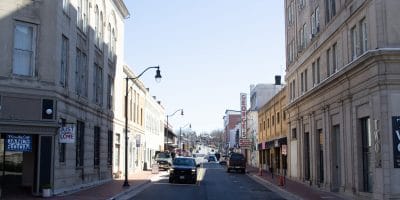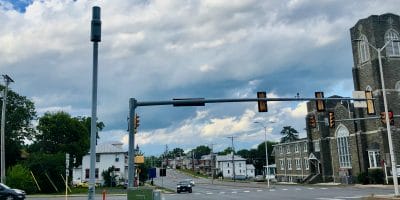
A contributed Perspectives piece by Russ Eanes
For many people, climate change is the biggest existential threat humans face.
While many of the biggest advocates for action are the young, closer to home one equally impassioned person doing all he can is Cal Redekop, age 94. Being in his tenth decade hasn’t stopped him from curbing his carbon footprint to help preserve the environment.
Last year, just before he turned 93, Cal bought an all-electric 2015 Nissan Leaf, which he drives when he’s not using his four-wheel pedal/electric “Amish Buggy.” Because he charges both vehicles at home, he calculates that all his transportation is carbon-free, considering that last year he also installed a 9.7 kWh solar system on his roof at the Virginia Mennonite Retirement Community (VMRC). He monitors closely its output and reckons that he generates more electricity than he uses, something he is happy to show to visitors.
Cal’s interest in and passion about environmental and economic stewardship goes back to his upbringing on a Mennonite family farm in Montana and the Midwestern Dustbowl of the Depression, which he wrote about in his book, Enchantment and Despair: Montana Childhood Stories, 1925-1937. Drought and dust storms drove his family from Montana.

Years later when he was in Germany after World War II, he spent time in the countryside and noted how the farms were ecologically efficient systems that promoted the cultivation of the land — a stark contrast to the drought-stricken farms from his childhood. He wrote later, “Only those who have a close and existential relationship with the natural world… can see what is really happening to our beloved nature.”
During much of his succeeding career in academia — where he taught courses in business management, sociology of religion and human and natural ecology across five colleges and universities in the U.S. and Canada — he maintained deep passions for connecting the areas of faith, sustainability and environmental stewardship.
In the 1970s, while at Tabor College, in Hillsboro, Kansas, he founded Sunshine Energy Works, which developed thermal connectors (hot water heat), quite useful in sunny, central Kansas. While teaching in Waterloo, Ontario, in 1979, he helped found a similar company there.
More recently—at age 89—he became an investing partner in Secure Futures, a Staunton-based solar energy company that develops, finances and designs photovoltaic solutions for schools, hospitals, governments and businesses. In Virginia, that includes large arrays for EMU, University of Richmond, Washington and Lee University and Shenandoah University, and a 2.6-megawatt installation planned for Richmond city schools.
Tony Smith, one of Secure Future’s co-founders, describes Cal as an active partner who offers new ideas. “He brings an important historic perspective, going back to his childhood in the Dust-Bowl. He has a passion for sustainability that honors life and future generations,” Smith said.
Cal was instrumental in Secure Futures becoming a B-Corporation, which means its mission and decisions as a business have to consider impacts on the environment and community. Smith said the B-Corporation certification has led to new opportunities that wouldn’t have been available otherwise.
For his part, Cal said his involvement “energizes me.” He is aware of the impact on future generations, including his own children and grandchildren. He hopes that the installation of his solar array can serve as a model for others in his retirement community and he envisions something similar on all the roofs of his neighbors.
To him, sustainability is not just a concern of future generations: it’s a legacy that he lives now.
Have something to say that you’d like to see published in The Citizen? We invite perspectives pieces from anyone in the community. Check out the guidelines and send us your thoughts.











